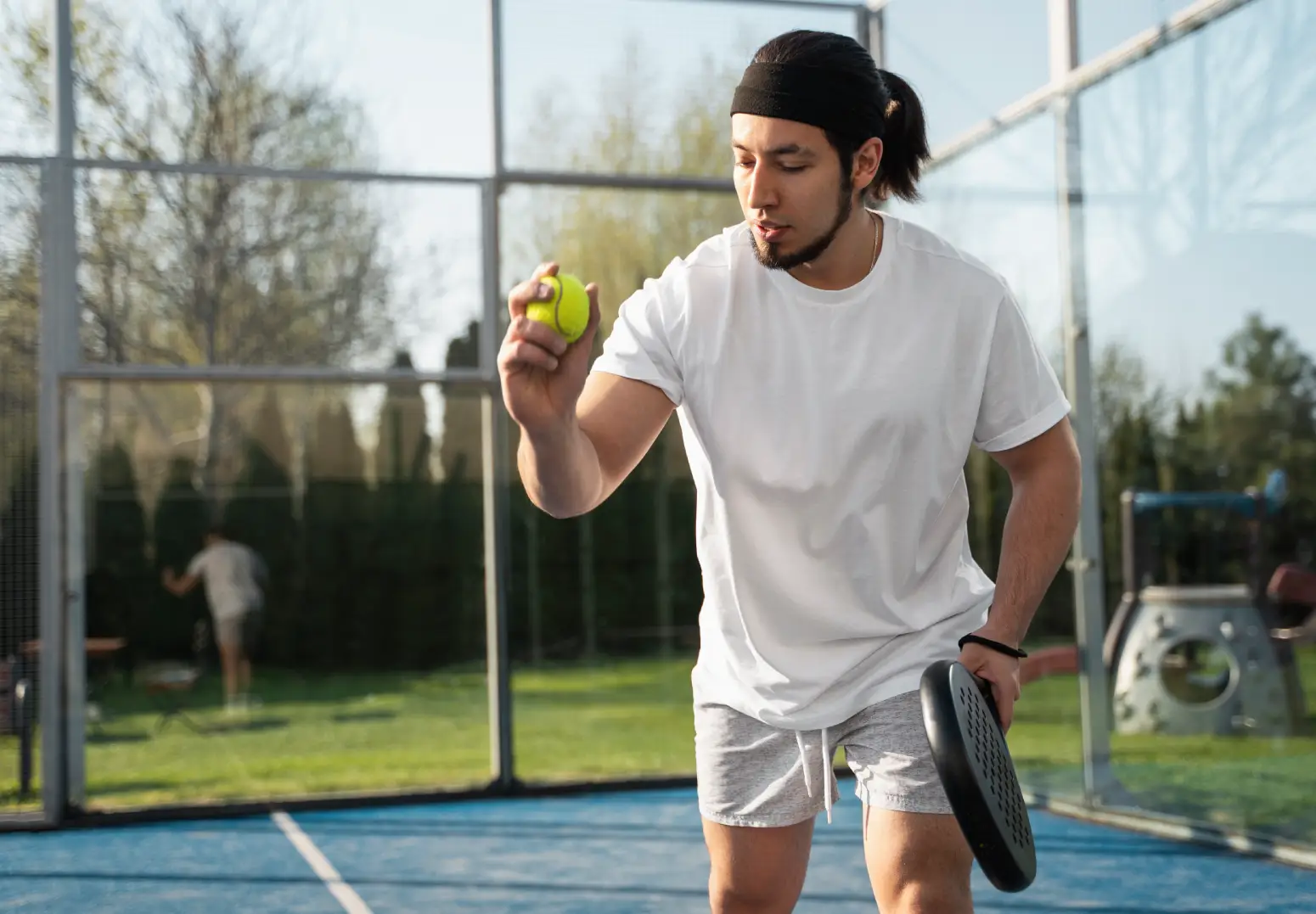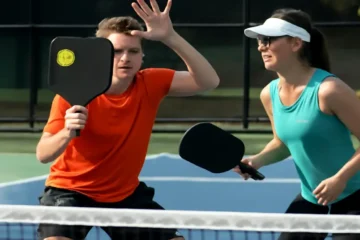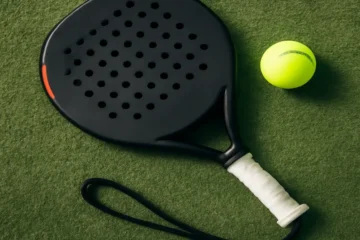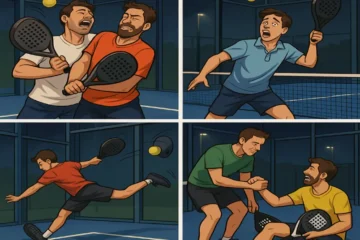Why Your Serve is Your Secret Weapon
Picture this: you’re playing a tight padel match, score tied at 5-5, 40-40. It’s your serve. You toss the ball, swing nervously… double fault. The point, the game, and possibly the match slip away—not because your opponent outplayed you, but because your serve broke down under pressure.
Or maybe you do get your serve in, but it floats weakly, sits up, and your opponent smashes it straight past you. Sound familiar?
Here’s the truth: in padel, the serve is rarely about blasting aces. Unlike tennis, it’s not a weapon of raw power. Instead, it’s a setup shot—a chance to put immediate pressure on your opponents, dictate play, and secure the all-important net position. A well-placed, well-executed serve forces weak returns, giving you control from the very first shot.
The good news? You can build a reliable, effective serve in just 30 days with the right plan. This step-by-step program will guide you from shaky starts to a confident, consistent serve that becomes a true strategic weapon in your game.
Let’s break it down.
Part 1: The Foundation – Deconstructing the Perfect Padel Serve
Before we dive into drills and progressions, it’s important to understand the what and why of the padel serve. If you’re coming from tennis or squash, you’ll quickly notice some big differences.
1.1. The Padel Serve vs. Tennis Serve: Key Differences
Many beginners make the mistake of trying to serve in padel like they would in tennis. But the two serves are completely different in purpose and execution:
- Underhand motion – By rule, padel serves must be underhand, struck below waist height after the bounce. That means no overhead bombs.
- Placement over power – Instead of raw pace, the serve in padel relies on spin, angles, and control to make life difficult for the returner.
- The role of the walls – After the bounce, the ball may hit the side or back glass, creating awkward trajectories. Good servers exploit this with clever placement.
Think of the padel serve not as a point-ending weapon, but as the first building block in your tactical plan.
1.2. The 3 Pillars of an Effective Serve
A great serve in padel rests on three main pillars:
- Consistency – The #1 priority. You must get the serve in play. Double faults are a free gift to your opponents.
- Placement – Smart servers aim at high-percentage targets like the “V” (the junction between the side and front glass) or jam the returner’s body.
- Effectiveness – The goal is to force a weak return. A low, sliced serve that stays close to the wall can be almost impossible to attack.
1.3. Essential Gear Check
Before you even hit the court, make sure your equipment is helping, not hindering, your serve:
- Padel racket – Beginners often benefit from a round-shaped racket (bigger sweet spot, more control). Advanced players may prefer diamond-shaped rackets for extra power.
- Balls – Use padel-specific balls, which have less pressure than tennis balls. This ensures the right bounce and feel.
- Shoes – A padel-specific shoe with good grip helps you stay balanced in the serving stance.
With the foundations set, let’s move on to the practical side—the 30-day mastery plan.
Part 2: The 30-Day Serve Mastery Plan
This program is designed for beginner to intermediate players who want to transform their serve step by step. Each week builds on the last, focusing on one key area at a time.
Week 1: Building Muscle Memory (Days 1–7)
Focus: Consistency and correct technique.
Your first goal is simple: get the ball in play reliably. Don’t worry about spin or power yet.
Daily Drills (10–15 minutes):
- Stance & Grip – Use the continental grip (like holding a hammer). Stand side-on to the net with your feet shoulder-width apart.
- The Pendulum Motion – Practice the swing without a ball first: smooth, underhand, pendulum-like. Then add a controlled toss and hit.
- Target Practice – Place cones or markers in the service box. Start with large targets and just aim to land the serve in.
Goal by Day 7: Serve 10 balls in a row into the correct service box with a smooth, legal motion.
Week 2: Introducing Placement & Spin (Days 8–14)
Focus: Variety and intention.
Once you can consistently land serves, start making them more challenging for opponents.
Daily Drills (15–20 minutes):
- The “V” Serve – Slice the ball so it skids toward the “V” between side and front glass. This forces awkward returns.
- The Body Serve – Aim directly at your opponent. It jams them, making the return uncomfortable.
- The Central “Clic” Serve – Hit the ball so it bounces then clips the side glass, producing unpredictable angles.
Goal by Day 14: Be able to alternate confidently between two serve placements (e.g., body and wide).
Week 3: Combining Skills & Adding Pressure (Days 15–21)
Focus: Serve + first shot combination.
Now that your serve has consistency and variation, it’s time to integrate it into match play by linking it to your next move.
Daily Drills (20 minutes):
- Serve & Volley – After each serve, move immediately to the net position. This is the classic padel tactic.
- Depth Control – Practice deeper serves to push opponents back.
- Combination Drills – Example: Serve wide, partner returns cross-court, you play the first volley.
Goal by Day 21: Execute a planned serve (e.g., slice wide) and transition smoothly to the net.
Week 4: Game Situation Integration (Days 22–30)
Focus: Performing under pressure.
Your serve must hold up when it matters most—under scoreboard pressure, in real rallies.
Daily Drills (20–30 minutes):
- Point-Play Serves – Play practice points where the rally begins only with your serve and the return.
- Pressure Scenarios – Simulate being down 30-40 or serving at deuce. Train your mind to hit confidently in those situations.
- Opponent Reading – Notice patterns. Does your opponent struggle with body serves? Do they mishit when the ball clips the wall? Use this info strategically.
Goal by Day 30: Serve with confidence in real match situations, using placement and spin as tools to set up points.
Part 3: Troubleshooting Common Serve Problems
Even with practice, every player faces serve struggles. Here’s how to fix the most common ones:
Problem 1: Consistent Double Faults
- Cause: Overhitting, rushing, or trying to do too much.
- Fix: Slow down. Focus on smooth motion at 70% power. Prioritize consistency over aggression.
Problem 2: The Ball Doesn’t Bounce Low
- Cause: Flat contact.
- Fix: Brush the ball slightly to add slice. This makes it skid and stay low after the bounce.
Problem 3: Lack of Power
- Cause: Using only the arm.
- Fix: Engage your legs and core. Bend your knees slightly and transfer weight forward as you swing.
Problem 4: Poor Toss
- Cause: Tossing too high or erratically.
- Fix: Keep the toss low and controlled, just in front of your hitting side. Consistency in the toss leads to consistency in the serve.
Conclusion: Your Serve, Your Advantage
In padel, a strong serve isn’t about winning free points—it’s about gaining control of the point from the very first shot. By following this 30-day plan, you’ll progress from simply getting the ball in play to serving with confidence, variety, and purpose.
You’ve learned the key foundations:
- How the padel serve differs from tennis.
- The three pillars of consistency, placement, and effectiveness.
- A week-by-week system to build your serve into a true tactical weapon.
- How to troubleshoot common mistakes.
But remember: improvement in padel, like in any sport, is an ongoing process. Even after 30 days, keep revisiting these drills. With practice, your serve will not only stop being a liability—it will become one of your strongest assets on the court.
So grab your racket, step onto the court, and start with Day 1 today. In a month’s time, you’ll serve with confidence, pressure your opponents from the first shot, and set yourself up to dominate at the net.
Your serve is your secret weapon. Master it.
FAQs on Padel Serve Techniques
1. How do you serve correctly in padel?
In padel, the serve must be underhand, hit below waist height, and struck after the ball bounces once. Stand side-on, use a continental grip, and focus on placement rather than power.
2. What is the most effective serve in padel?
The most effective padel serves are low, sliced, and well-placed. A serve into the “V” (where the side and front glass meet) or a body serve that jams the opponent often forces weak returns.
3. Can you do an overhand serve in padel?
No. The rules state that the ball must be struck underhand and below waist height after a bounce. Overhand serves are not allowed in padel.
4. How can I add spin to my padel serve?
To generate spin, brush the back or side of the ball with your racket instead of hitting it flat. A slice serve makes the ball skid low and stay close to the wall, making it harder to return.
5. How do I improve consistency in my padel serve?
Start with a simple, repeatable motion at 70% power. Keep your toss low and steady, practice daily target drills, and focus on getting the ball in play before working on spin or variety.
6. Is the serve important in padel?
Yes. While it’s not a point-ending shot like in tennis, the serve is critical in padel because it sets up your position at the net and puts immediate pressure on opponents.
7. How long does it take to master the padel serve?
With structured practice, most players can develop a consistent and effective serve within 30 days. Continued practice refines placement, spin, and strategy over time.




